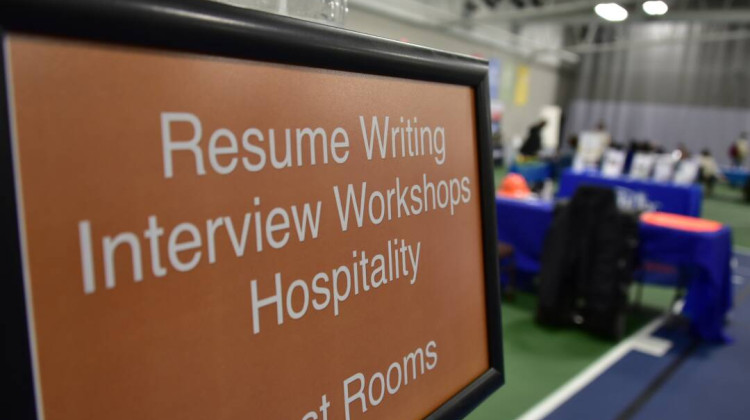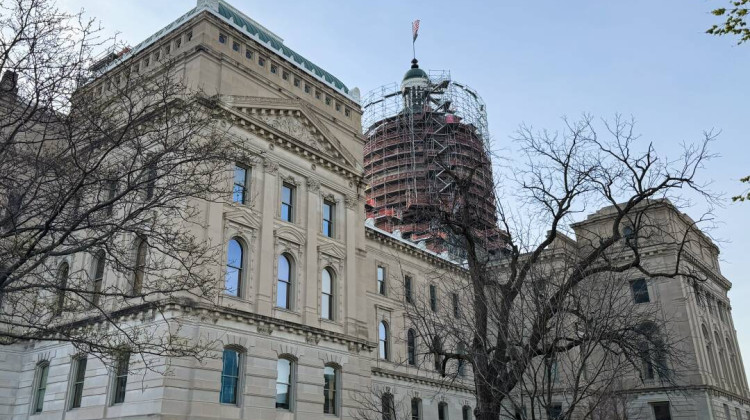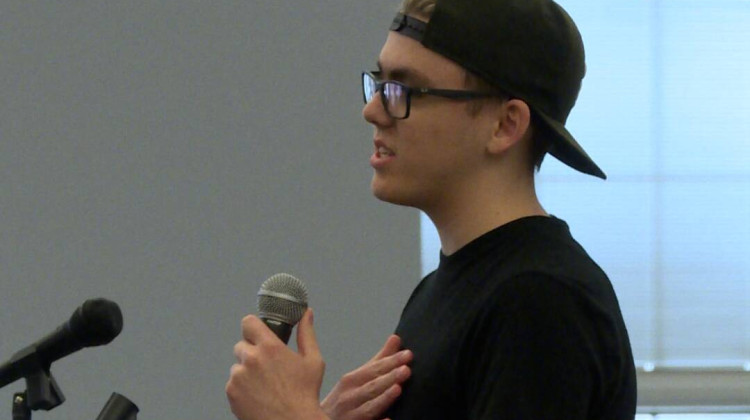President Obama has made incarceration reform a White House theme this week. On Monday, he commuted the sentences of 46 mostly nonviolent drug offenders; and on Tuesday, he spoke about reducing the prison population in a speech to the NAACP.
"The United States is home to 5 percent of the world's population but 25 percent of the world's prisoners," Obama said. "Think about that. Our incarceration rate is four times higher than China's."
And Thursday he'll become the first sitting president to visit a prison — a federal institution in Oklahoma called El Reno.
He's far from the only politician promoting changes to the justice system. For a number of years, there's been a growing bipartisan movement to reduce sentences for nonviolent offenders. Efforts are well underway in states as politically divergent as New York and Texas.
Still, America's prison population hasn't decreased much. It's dropped about 6 percent from its high point, in 2009, but experts say they thought it would drop even more, given the scale of initiatives by states and the federal government.
What's more, the most recent numbers show the decreases have leveled off.
'Pack Your Stuff — You're Leaving In The Morning'
Much of the decline in the prison population since 2011 can be attributed to California, which was ordered by federal courts to relieve overcrowding in state prisons. Voters there have also shown a new interest in incarceration changes, approving moves to lighten sentencing.
Last fall, they approved Proposition 47, which reclassified a range of lower-level felonies down to misdemeanors. The reclassification was retroactive, which meant roughly 3,000 prisoners found themselves set free.
"It was a frenzy!" says Leroy Arrington, who was in state prison at the time. "Every day, five or six people were going home, and they had no idea they were leaving. The corrections officer would come to the bunk and say, 'Look, you fell under Prop 47, pack your stuff — you're leaving in the morning.' "
Arrington's turn came in February. He was serving 2 1/2 years for stealing liquor; under Prop 47, his crime was no longer a felony, so he got out six months early. Now he's enrolled in a downtown L.A. rehabilitation program called the Amity Foundation, where he takes classes and prepares for a life on the outside.
Even though Arrington has been in and out of prison most of his life, he says this time is going to be different.
"A year from now I plan to be still out of prison and be clean and sober and have a place of my own," he says. "But I'm just taking it one day at a time, and each day that I'm not in prison is a plus for me."
But many police aren't so sure that releasing people early is a plus for society. Some say they're already seeing the effects of Prop 47 on the streets.
"There has definitely been an uptick in burglary and theft from motor vehicles," says Bill Blount, a detective in the LAPD's Hollenbeck station. He says car prowls are up about 30 percent in his area — and he thinks it's partly because more drug users are staying out of jail now.
"That person needs to support his habit," he says. "It's kind of like a spiderweb effect, where you have the drug user in the middle, and then this person is responsible for a multitude of other things."
The Diminishing Returns Of Mass Incarceration
It's not just law enforcement worried about Prop 47. Prosecutors are concerned, too.
"I don't think these current reforms are helping at all," says Eric Siddall, a prosecutor in Compton. He's also on the board of the Association of Deputy District Attorneys, which bitterly opposes Prop 47. Siddall is very clear about why he thinks crime went down in neighborhoods like this.
"They beefed up the penalties, and I think the penalties have kept people off the street, and because of that, things are safer," he says.
And on the face of it, that makes sense: You incarcerate more people, they're not on the streets to commit crime.
But academics like Steven Raphael, an economist at the University of California, Berkeley, and an expert in the costs and benefits of a big prison population, say it's not that simple.
"What drove the increase over the last three decades was sort of a series of sentencing reforms that were just kind of layered on top of each other, decade after decade, especially during the '80s and '90s," Raphael says. "And I don't know that there was really much attention being paid to the effectiveness of this particular tool."
He says it's pretty clear that the tougher sentences did work — at first. When America first started putting away more people, crime went down. But the effect didn't last.
"We have a fairly strong body of research that suggests as the incarceration rate goes up, the effectiveness of incarceration as a crime-control tool goes down," he says.
In other words, it's a case of diminishing returns. The first million people put in prison cut crime a lot; the second million, not so much.
And researchers say the converse is probably also true: Releasing the more marginal offenders won't cause a crime wave.
Public Perception And Unknown Tipping Points
But you can't blame people for being nervous. Statistics are one thing — but a personal brush with crime is another.
In fact, some studies show a slight increase in property crime in California since the policy changes began, and L.A. saw a sharp spike in violent crime right after Prop 47 passed last fall.
Mike Romano, director of the Three Strikes Project at Stanford Law, says people shouldn't jump to conclusions.
"I really do think that it is impossible to isolate how these reforms may or may not have impacted recent crime statistics," he says, something echoed by other researchers.
Still, advocates for ex-offenders worry about the conclusions being drawn by police and prosecutors.
Eunisses Hernandez, who works at the Amity Foundation, where Leroy Arrington lives, sums up her concern: "They're going to say, 'We told you so,' " she says. "That's what they want to say ... 'We told you so,' that this was gonna happen."
The Amity Foundation is paid by the state to help people like Arrington re-enter society. And Hernandez says there isn't enough transitional help for people leaving prison.
"If they released, like, half the population right now, without services and with the re-entry systems that are currently available, I do believe that more crime will exist," she says. "Because people need to survive, and they're gonna do what it takes to survive."
Hernandez thinks the police and prosecutors have been the biggest opponents of change, but the reality isn't that simple. While cops worry about how they've lost leverage against the kind of habitual, low-level offenders who bring down a neighborhood, many are also quick to say they don't believe prison is a cure-all.
Detective Bill Blount is one of those — despite the spike of car prowls he's dealing with.
"We can't throw everybody in prison. We don't want to be a prison state. But there's got to be a balance somewhere in between, and I don't know what that balance is."
And on this point, the cop is in agreement with the academics. They both say they really don't know how much the incarceration rate can decline before reaching that tipping point — when it starts pushing crime back up more than society can bear.
The only real way to find out is to try it.
9(MDEwMDc1MzM3MDEzNDczOTA0MDc1MzViMQ001))
 DONATE
DONATE








 Support WFYI. We can't do it without you.
Support WFYI. We can't do it without you.